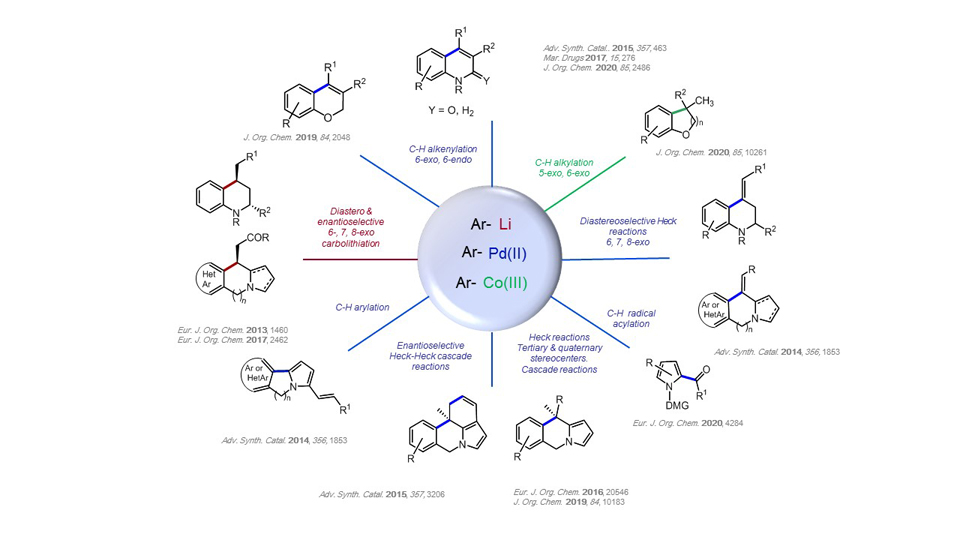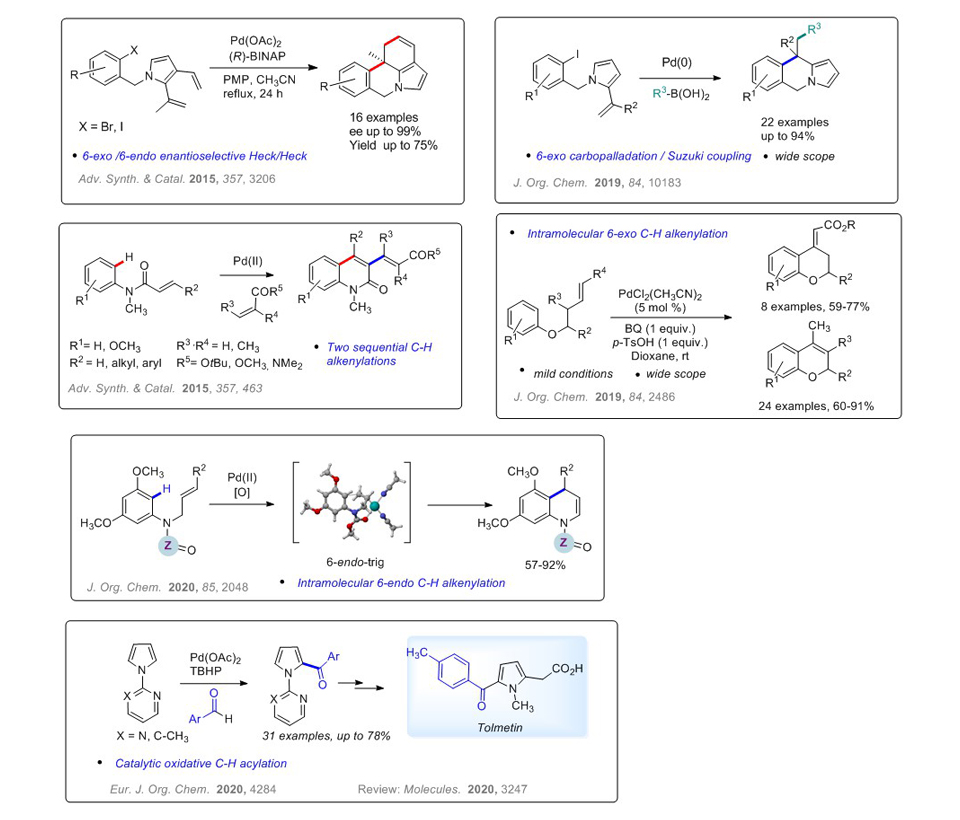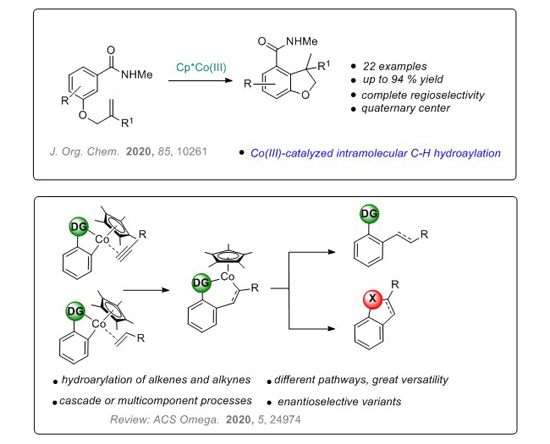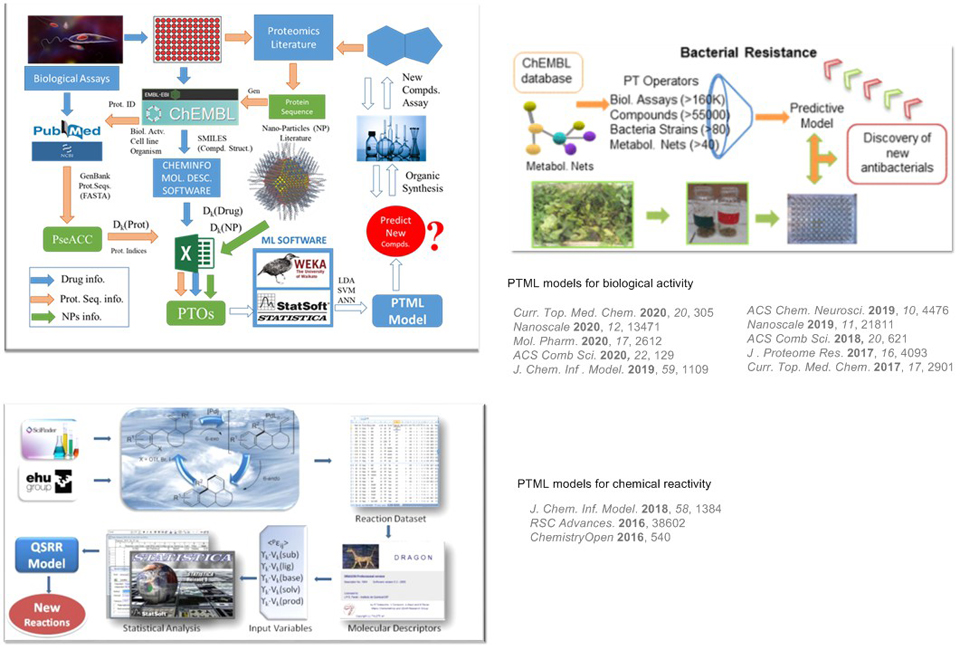Research overview
Our projects are focused on the development of synthetic methodology based on organometallic chemistry and asymmetric catalysis, and applied to the synthesis and functionalization of heterocyclic systems, potentially active compounds, natural products or drugs. We also carry out interdisciplinary projects that involve computational chemistry and machine learning (ML) tools for reactivity prediction, and for the design of biologically active molecules.
Our research interests are summarized in the following topics:

TRANSITION METAL-CATALYZED REACTIONS IN THE SYNTHESIS AND FUNCTIONALIZATION OF HETEROCYCLES
Pd(0) and Pd(II): Heck reactions and C-H activation
We are currently working in developing methodologies based on Pd(0) and Pd(II) catalysis .We have shown that Pd(0)-catalyzed Heck-type or direct C-H arylation reactions and Pd(II)-catalyzed C-H alkenylation or C-H acylation reactions are versatile and effective tools for the synthesis of polyfunctionalized medium-size rings and of drug-like compounds. Asymmetric variants and cascade reactions have also been developed. Some examples are shown:

Co(III)-catalyzed C-H actication reactions
We are also sutdying the use of more abundant and less toxic first raw metals, such as Co(III), for C-H intramolecular hydroarylation reactions.

COMPUTATIONAL MODELS FOR THE PREDICTION OF CHEMICAL REACTIVITY, BIOLOGICAL ACTIVITY AND TOXICITY
We are developing new computational multi-target QSRR (quantitative structure-reactivity relationship) methods capable of predicting reactivity or enantioselectivity levels of a given reaction when structural modifications (on substrates, ligands or catalysts) or experimental conditions are carried out.
On the other hand, we are also developing PTML multi-target QSAR (quantitative structure-activity relationship) or QSTR (structure-toxicity relationship) models that may be useful tools for the prediction of more effective and safer drugs (anti-microbial, anti-cancer, neuroprotective drugs, etc.).
Some examples are shown:

